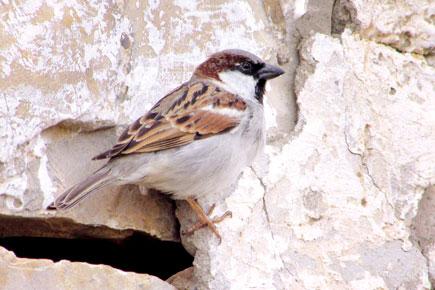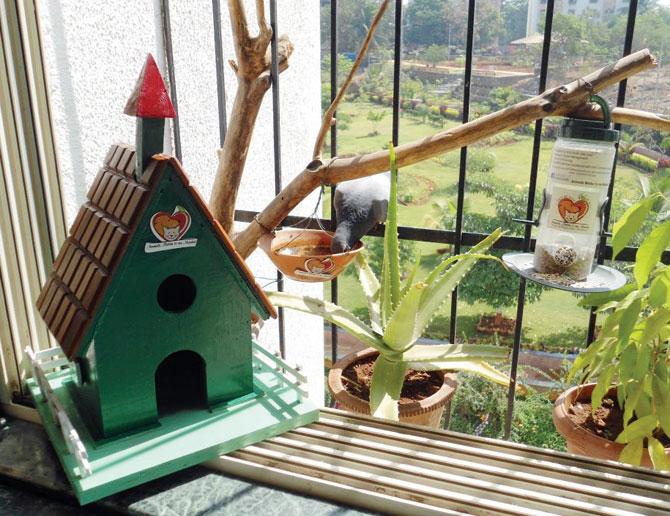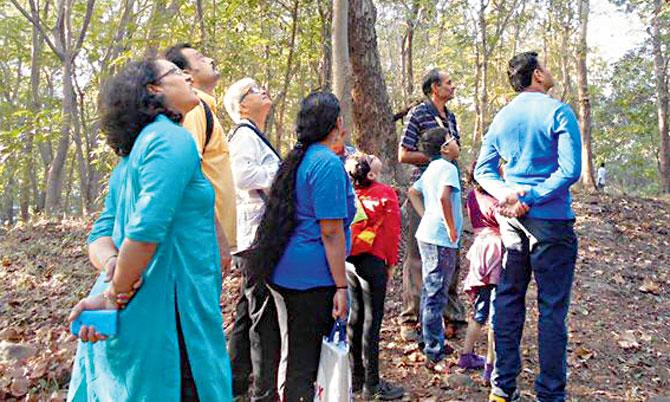Set off on a walk that discusses the house sparrow's alarming decline in time for World Sparrow Day

The house sparrow (Passer domesticus)
![]() In the midst of blaring horns, loudspeakers, TV sets and now smartphones, it’s not surprising that most Mumbaikars aren’t aware that the sharp chirps of the tiny house sparrows may soon become jsut a distant memory.
In the midst of blaring horns, loudspeakers, TV sets and now smartphones, it’s not surprising that most Mumbaikars aren’t aware that the sharp chirps of the tiny house sparrows may soon become jsut a distant memory.
ADVERTISEMENT
Over the last few decades, several studies in India and across the world have revealed a decline in the population of house sparrows (scientific name: Passer domesticus) in urban areas. In fact, a 2013 survey by the Bombay Natural History Society (BNHS) reported a decline in frequent sightings of house sparrow nests across Greater Mumbai region from 40% in 2005 to 10% in 2012. Though the Greater Mumbai Region fared better in numbers of no-sightings when compared to other Indian cities, the survey, compiled as a result of the Citizen Sparrow campaign (Citizensparrow.in) ,indicated that sparrows are shifting to smaller towns and villages.

The house sparrow (Passer domesticus). Pic Courtesy/BNHS
Us and them
With an aim to create awareness about the decline in their population, and promote conservation, every year, March 20 is celebrated as World Sparrow Day. “It’s important for people to know that there’s a decline in their numbers and that humans are to be blamed for it,” says Mohammad Dilavar, vice president and founder, Nature Forever Society, which initiated World Sparrow Day in 2010.
“The sparrows need water to bathe and drink. In summer, the need gets magnified. We tell Mumbaikars to keep food and water out in the open for them, and maintain it throughout the year,” he shares.
According to other studies, the possible causes for the decline could be mobile phone tower radiation, introduction of unleaded petrol, pesticides, destruction of habitat including open water resources and food sources. Dr Shubhalaxmi Vaylure, founder and CEO, Ladybird Environmental Consulting LLP, which will be conducting a special sparrow walk this weekend at Urban Haat in Navi Mumbai, says, the decline in sparrow population in urban areas should be studied alongside the increase in crow population.
“The fact that an ubiquitous urban bird like the house sparrow is moving to rural areas means it’s denied shelter and food. And how can it? We are trimming everything (green cover) around us,” she says.
“A decline in sparrow population means the wildlife that was once around Mumbai is shrinking. The rise in the crow population points to the proliferation of garbage,” she adds. The walk will introduce people to the problems faced by sparrows as well as the possible recourse one can take while motivating them to contribute to the Citizen Sparrow programme.
Buy a home for sparrows
Offer shelter to the urban house sparrows by setting up a nestbox or bird bath next to your window or in your locality. You can either build one yourself or buy one online from Nature Forever Society (visit worldsparrowday.org) or from AMTM India (call 28895572)

Walk the talk
Learn about sparrows, their behaviour and how to attract them into your neighborhood at a special walk this weekend. The workshop will also offer guidance on how to participate in the Citizen Sparrow programme that aims to study and count sparrows all over India on a regular basis. Join in to learn more about this tiny chirping creature and how to protect it.

On: March 20, 7.30 am to 9.30 am
At: Urban Haat, CBD Belapur, Navi Mumbai.
Entry: Free (Registration compulsory)
Call: 9987013144
Email: consultladybird@gmail.com
 Subscribe today by clicking the link and stay updated with the latest news!" Click here!
Subscribe today by clicking the link and stay updated with the latest news!" Click here!







